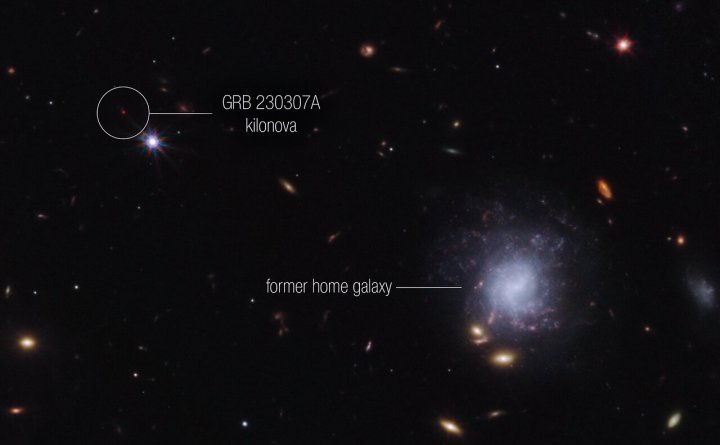In its earliest stages, the universe was composed mostly of hydrogen and helium. All of the other, heavier elements that make up the universe around us today were created over time, and it is thought that they were created primarily within stars. Stars create heavy elements within them in the process of fusion, and when these stars reach the ends of their lives they may explode in supernovas, spreading these elements in the environment around them.
That’s how heavier elements like those up to iron are created. But for the heaviest elements, the process is thought to be different. These are created not within stellar cores, but in extreme environments such as the merging of stars, when massive forces create exceedingly dense environments that forge new elements.
Now, the James Webb Space Telescope has detected some of these heavy elements being created in a star merger for the first time. Researchers used the telescope to observe the effects of a kilonova, a huge outpouring of energy that occurs when two neutron stars merge. The event created a particularly bright gamma-ray burst which allowed the researchers to zero in and identify the location of the merger.

Webb observed the element tellurium being ejected by the kilonova, which was likely created in the merger. Although scientists have long theorized that this is how heavy elements could be created, this is the first time such direct evidence has been observed as kilonovas are rare and brief events. The particular brightness of the gamma-ray burst GRB 230307A was key to helping to locate this event.
“Webb provides a phenomenal boost and may find even heavier elements,” said Ben Gompertz, a co-author of the study at the University of Birmingham in the United Kingdom. “As we get more frequent observations, the models will improve and the spectrum may evolve more in time. Webb has certainly opened the door to do a lot more, and its abilities will be completely transformative for our understanding of the Universe.”
The research is published in the journal Nature.
Editors’ Recommendations

